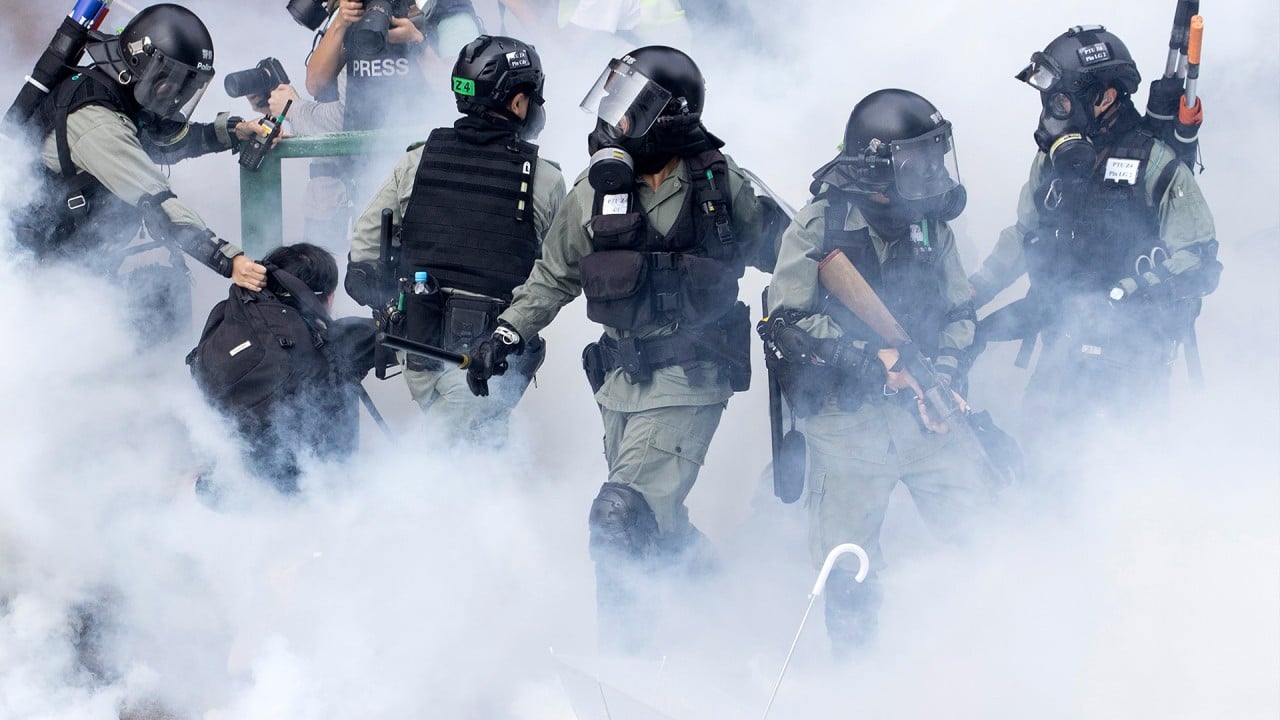Hong Kong protests: trio’s mere presence at National Day unrest makes them guilty of rioting, judge rules
- District Judge Ernest Lin cites ‘joint enterprise’ principle in convicting three, despite lack of evidence they committed violent acts
- Lin rules that they had ‘abetted’ others by deciding to stay at protest on October 1, 2019

Three people arrested during an anti-government protest in 2019 have been convicted of rioting, despite a lack of evidence pointing to any violent act, after the judge found their presence and attire had “abetted” others and made it difficult for police to enforce the law.
Judge Ernest Michael Lin Kam-hung found the trio guilty on Thursday by citing a Court of Appeal ruling last month, which upheld prosecutors’ wide power of indicting suspects who did not directly take part in a riot under the legal principle of “joint enterprise”.
Lin also convicted a fourth defendant of rioting and arson after identifying him as the man captured on camera hurling objects at police and burning a banner on the street on the day in question.
The District Court trial last month centred on the National Day demonstration in Tsuen Wan on October 1, 2019.
More than 200 protesters were said to have confronted police at the junction of Tai Ho Road and Hoi Pa Street at around 3.40pm by throwing petrol bombs, bricks, water bottles and rubbish at officers from behind a movable roadblock made of umbrellas. Officers responded by firing tear gas and rubber bullets.

